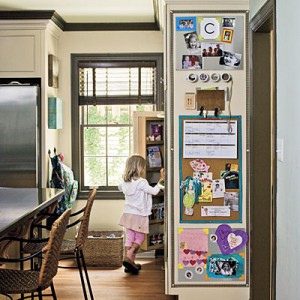by Melanie Taylor | Aug 15, 2015
 As summer break comes to a close, many children will be experiencing changes in their school experience at an entirely new school. Be sure to make the transition as easy as possible by talking with your child about the positive experiences they may have this new school year. Below are a few tips on how to help you and your child adjust to such a big change with the least amount of stress.
As summer break comes to a close, many children will be experiencing changes in their school experience at an entirely new school. Be sure to make the transition as easy as possible by talking with your child about the positive experiences they may have this new school year. Below are a few tips on how to help you and your child adjust to such a big change with the least amount of stress.
Introduce yourselves to the new school:
• Make sure that the new school expects you: register your child before the first day of class
• If possible, visit your child’s new school: try to meet the office staff, principal, and teachers before the transition to establish a personal connection and to help them prepare for your child’s arrival
• Some schools have “welcome packets” to give to new families; if not, try to get basic information, such as what time the school day begins and ends, the procedure for lunch (can your child buy lunch, does the school provide snacks, etc.), transportation procedures (what’s the bus schedule), and information about health services and emergency procedures
• Try to meet other school families; if you have an elementary school-aged child, see if you can arrange a “play date” with another child in the same grade (preferably before the first day of school.)
• Become involved in your child’s new school. Consider joining the PTA, or volunteering at the school; the more involved you are, the more your child will feel like his or her school is important to you and the more connected he or she will feel.
Help your child adjust:
• Make sure your child understands the reasons for changing schools; if you have an older child, try to give him or her as much “advance notice” as possible so that he or she will have time to adjust to the idea
• If time allows, show your child his or her new school and the surrounding neighborhood; see if you can arrange for a student to show your child around the school and introduce him or her to teachers and staff; some schools have a “buddy system” or other ways of helping your child meet other children in the school
• Make sure the school has what it needs to make the best decisions concerning your child’s classroom placement and academic and social needs; confirm that the new school has obtained your child’s educational, health, and other relevant records
• Be patient. It is perfectly normal for a child to feel anxious, scared, or irritable during times of transition. Let your child know that you understand that this is difficult; take the time to listen to his or her concerns, and spend time together while your child develops new school connections and friendships
• Stick to your routine. If rapid changes have left your child upset, knowing what’s expected at home can provide a comforting calmness. Encourage your child to feel good during this stressful time: encourage (or enforce) a schedule including a regular bedtime and a healthy breakfast.
• If your child had a negative experience at his or her last school, speak positively about the fresh opportunity that the new school presents. Help your child develop new goals for school success
• If your child is young, or is particularly nervous, consider accompanying him or her to school for the first few days
• Encourage your child to become involved in school activities, sports, or after school clubs
• Make sure your child has what he or she needs for the first day of school (ask the school for a classroom supply list.) This will make your child feel more included on the first day.
• Help your child identify something good about his or her new school, and offer comfort and reassurance that adjusting to a new school takes time.
One of the most important steps as a parent is to realize that moving to a new school is a very big deal for many children. There may be a few bumps in the road along the way, but remember to be patient, understanding and there for your child and he or she will eventually adjust. This adjustment could take up to 6 weeks. If the adjustment continues to be struggle after several months be sure to consult with a school counselor to help with any further assistance.
Do you have a skill or passion that you would like to teach the next generation? Consider becoming a 4-H volunteer. 4-H offers a wide variety of opportunities for volunteers to make a difference in their community, or even at their school. Next week, our blog post will focus on ways that you can volunteer through 4-H school programs. To find out more about volunteer opportunities, contact your local UF IFAS Extension Office, or visit http://florida4h.org/volunteers.
by Prudence Caskey | Aug 7, 2015

Back to school shopping can be a teachable moment for your kids about money management
In many parts of Florida, school starts in less than a week! Depending on where you live, what school your children attend, and what grade they are in, back to school supplies can cost the average family anywhere from $100 to $500! Keeping this in mind, it is time to start thinking about a strategy for your back to school shopping. The good news is, the back-to-school tax holiday has been extended from three days to ten days this year!
The tax holiday will begin August 7 and run through August 16. Tax-free items include; clothing, footwear, wallets, bags that cost $100 or less, school supplies that cost $15 or less, and the first $750 of the cost of personal computers and related accessories. Now that you know when and what to shop for, here are some tips on how to shop to make the most of every dollar:
Have a plan
- Get the supply list for your child’s school and make notes.
- If you have more than one child, compile a combined list. If your son needs 6 folders and your daughter needs 6 folders, on your list, simply write “12 folders”. This will cut down on the time spent on shopping.
Have a budget
- Make a list of what your children will need and get an idea of how much it will cost.
- Use back to school shopping as an opportunity to help your child learn about prioritizing and budgeting. Tell your child how much they have to spend for specific items. For example, they can spend $20 for a backpack, $50 for shoes and $200 for new clothes. If they want the $90 pair of shoes, they will need to get a less expensive backpack or spend less on clothes. This will help you stay within your budget and aid in teaching your children some financial skills. It is a win-win!
Shop around
- Many stores are having sales right now. If you approach back-to-school shopping like you might do “Black Friday” shopping, you can have a lot of fun with it!
- Check ads in the Sunday paper for sales on items on your list. Many papers will also have coupons for wipes, paper towels, and other items often found on preschool or elementary school lists. You can also use online coupons, e-coupons, and store loyalty cards for even more savings.
- Check out stores you may not have considered in the past such as office supply stores, dollar stores, and even thrift stores.
Plan for next semester
- Now is the time to get all of the supplies you need at a great price. If you find a good deal on some basics, stock up for next semester on items like glue sticks, pens, folders, and notebook paper.
Going back to school can be an expensive time of year; however, it doesn’t have to be with a little planning and budgeting. Put the same energy into back to school shopping that you might do with Christmas shopping. Make it a sport! Remember for next year, at the end of the summer, school is approaching and you can plan for it. If you are interested in financial management, budgeting, or shopping, consider becoming a 4-H volunteer! We need volunteers to share their knowledge and skills with youth to teach youth about financial literacy and consumer choices (smart shopping). If you are interested, contact your local UF IFAS Extension Office, or visit http://florida4h.org./volunteers.
by Heather Kent | Aug 8, 2014

Home Command Center idea from SouthernLiving.com
As summer comes to a close, many parents are overwhelmed getting ready for “back to school” let alone the new 4-H club year! Over the next few weeks, we will share some timely tips for busy 4-H parents so that you are less likely to miss a school event, practice, 4-H meeting, or deadline. One of the best ways to stay organized and on track is to have a home communication center.
The first thing you will need to decide is where to place your command center. It should be located in a well-traveled area of your home, such as a kitchen, entry way, den, or family room. You can use a blank wall space that you walk by several times a day, a corner of your kitchen countertop, or even a cabinet. There are lots of ideas on Pinterest and organizing blogs that can inspire you.
Once you have determined a location, consider which elements you want to include in your command center. Every command center needs at least three items:
- Calendar– Some families have a calendar for each member of the family, but for smaller families, it is recommended to use one calendar and assign each family member a color, and write their activities in that color on the calendar. You can use a traditional paper calendar or a dry erase calendar. Remember that if you use a one-month dry erase calendar, you will need another calendar or space to put important future appointments.
- Folders or cubbies– You can use wall mounted folders/magazine holders, or file folder holders that sit on a counter or desk. One folder per family member to contain important homework assignments, 4-H project information, receipts, bills, and so forth. Folders are not a permanent filing solution- they are only to contain information that is not ready to be filed, or information that that you need to access frequently such as a school lunch menu, or soccer practice schedule.
- Message Board– Bulletin boards, dry erase boards, chalk boards, or magnetic boards work well for reminders, important phone numbers, directions to a birthday party, grocery lists, and other bits of information that you do not want to put in a folder or on a calendar. If you are limited on wall space, consider installing self-adhesive cork board to the inside of a kitchen cabinet located above or next to your command center.
Other items that you might want to include in your command center: chore charts, weekly/monthly menu plans, a hook for keys, backpacks, jackets, and a charging station for cell phones.
Last but not least, think about how you want your center to look. You can keep it very basic and functional, or you can design it to coordinate with the rest of the room’s décor/color palette. Much of the look and feel of your command center will depend on your budget. Many companies sell coordinating command center components in a variety of finishes that you can mix and match, but they are more expensive. A less expensive alternative is to purchase the individual elements that you need from your local office supply or big box store, and then paint them to match, or cover them with contact paper in a fun print or color. Your command center can be as simple or elaborate as you prefer- you are only limited by your creativity!
As your family prepares for back to school, don’t forget that the 4-H year will be coming to a close at the end of this month. Enrollment in Florida 4-H begins August 23rd. To re-enroll, visit: http://florida.4honline.com or contact your local UF/IFAS County Extension Office.
Next Week: Setting up a Homework Center
 As summer break comes to a close, many children will be experiencing changes in their school experience at an entirely new school. Be sure to make the transition as easy as possible by talking with your child about the positive experiences they may have this new school year. Below are a few tips on how to help you and your child adjust to such a big change with the least amount of stress.
As summer break comes to a close, many children will be experiencing changes in their school experience at an entirely new school. Be sure to make the transition as easy as possible by talking with your child about the positive experiences they may have this new school year. Below are a few tips on how to help you and your child adjust to such a big change with the least amount of stress.

